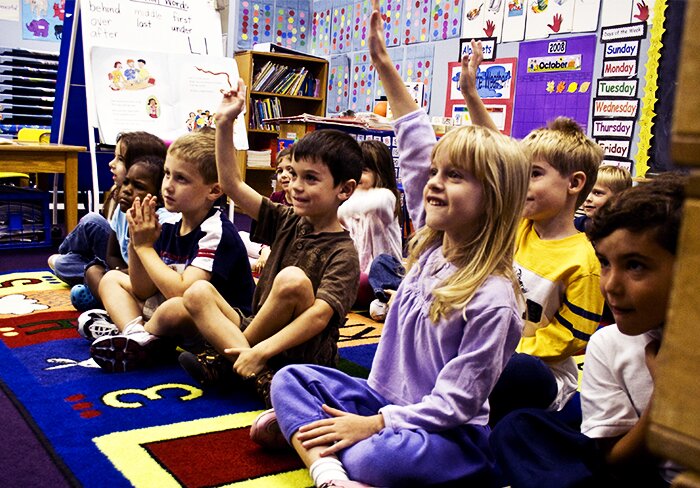A New Kindergarten Readiness Method

For many years, states have been searching for a reliable way for measuring the extent that young children are on the right track for entering kindergarten, and for identifying subgroups of children who can benefit from intervention or additional support during the pre-K years. A new measure that is based on the National Survey of Children’s Health (NSCH) of the Health Resources and Services Administration (HRSA) might meet this need and work to fill a critical gap in early childhood policy-relevant data.
Kelly Murphy, Katherine Paschall, and Kristin Anderson Moore, who are Child Trends researchers, are working very closely with the Maternal Child Health Bureau (MCHB) of the HRSA to assist the Bureau with developing and refining the new Healthy and Ready to Learn National Outcome Measure, using National Survey of Children’s Health data.
This pilot measure is seeking to capture school readiness of children 3 to 5 years old at the national and state levels through the adoption of a whole child perspective, including measurements of early learning skills, social-emotional development, self-regulation, and motor and physical health development. After the measure has been finalized, decisionmakers (families, advocates, educators, early childhood administrators, governors, and legislators) will have a detailed picture of young children’s readiness in their states, broken down by essential factors such as parental education, income, ethnicity, and race.
The Healthy and Ready to Learn pilot measure has the potential for informing and strengthening policies, programs, and services for supporting young children as well as their families during the crucial years before entering kindergarten. For example, this finalized measure will allow decision makers to know what percentages of children are on track for entering kindergarten at 3, 4, and five years old. And the program will be able to identify subgroups of children whose readiness for kindergarten could be boosted by providing additional support during their early years. The measure, in essence, will work as an early warning system.
We here at Child Trends are very excited about the developing measure. It has the potential for answering the long-sought questions of the field about school readiness, and for providing this information, at the level of the population, years before children are entering kindergarten. However, the work is only beginning, and help is needed to ensure the measure is as reliable as it possibly can be. Currently, we are working with our MayaTech partners and the HRSA to validate this measure rigorously. We must take the necessary time to consider revised and new survey questions as well as confirm the accuracy of the proposal before it is released for the states to use.
An essential step in this validation process is to gather input from education and early childhood fields, especially as we continue to refine this measure and seek to understand its utility better.
Photo Credit: https://www.flickr.com/photos/wwworks/2908834379 some edits were made to this photo.